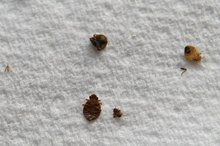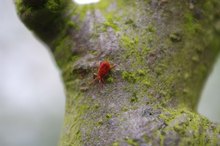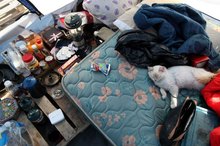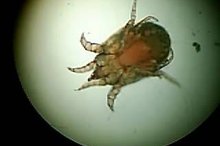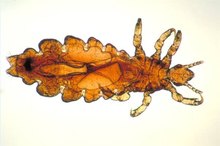How to Get Rid of Turkey Ticks
Turkey ticks, also called turkey mites and seed ticks, are actually just lone star ticks in larvae form 1. They are less than one millimeter in size and have only six legs, instead of the eight legs of the full grown tick 1. The female tick hatches the turkey ticks and they attach onto a host, sucking blood and gaining strength until they become large enough for the next stage 1. They fall off the host by themselves after anywhere from a couple hours to a day, but they still cause itching and rashes. With some knowledge on how to get rid of them you can protect yourself from the turkey ticks and full grown ticks alike.
Check yourself and others in your home for the turkey ticks. They are so small that they only look like freckles. A magnifying glass may help in this task.
Common House Bugs That Bite
Learn More
Wash with lice shampoo to kill the turkey ticks on your body. Then allow your skin to dry and rub the shampoo on your skin again, treating it like a lotion. This will help your itching as well as take care of any leftover ticks 1.
Clean your home to prevent the turkey mites from growing any larger. They drop off once they are fed and do not attach onto anything until another host comes along so they are easy to simply vacuum. Wash your sheets in hot water and vacuum as much of your house as possible.
How to Get Rid of Mites on a Human
Learn More
Eliminate the full grown ticks as they are the source of turkey ticks. Check yourself and your pets often for ticks. Apply a pesticide made for ticks outdoors to the perimeter of your home, your lawn and any areas that your pets frequent 1. Also apply to any areas that are protected enough for the female to lay eggs including under ground covers, in the cracks of patios and driveways and under shrubbery.
Tips
Apply the lice shampoo again if the itching persists. Seek medical attention if it will simply not go away.
Warnings
While applying pesticides, wear protective clothing and follow the directions on the package.
Related Articles
References
- LA County Department of Public Health: Managing COmmon Tick Pests in Los Angeles County
- Centers for Disease Control and Prevention (CDC). Lyme Disease. CDC.gov.
- Centers for Disease Control and Prevention (CDC) staff. Tick Borne Diseases of the United States. CDC.gov.
- Centers for Disease Control and Prevention (CDC) staff. Overview of Tickborne Diseases. CDC.gov.
- Johns Hopkins Medicine, Rheumatology staff. What to do After a Tick Bite. Johns Hopkinsrheumatology.org.
- Mayo Clinic staff. Patient Care and Health Info. Tick Bites: First Aid. Mayo Clinic.org.
- Ostfeld, R. (2018) 8 Facts About the Ecology of Lyme. The Cary Institute of Ecosystem Studies. Caryinstitute.org.
- Zecken de Das Infoportal. About Ticks. Zecken.de.
Tips
- Apply the lice shampoo again if the itching persists. Seek medical attention if it will simply not go away.
Warnings
- While applying pesticides, wear protective clothing and follow the directions on the package.
Writer Bio
Sarah Morse has been a writer since 2009, covering environmental topics, gardening and technology. She holds a bachelor's degree in English language and literature, a master's degree in English and a master's degree in information science.
